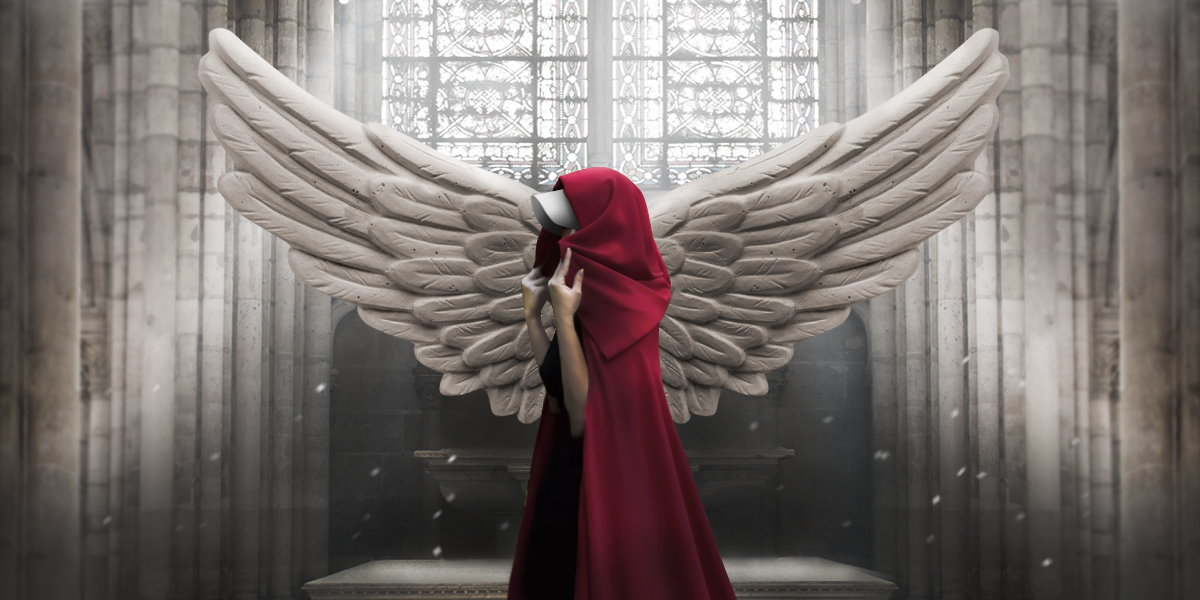We mostly recommend season 1 and season 3 for sheer visual spectacle, as season 2 was somewhat more subdued and had less diverse imagery. In any case, when you begin watching The Handmaid’s Tale, the first thing that’ll hit you is the clear delineation between the different classes of Gilead society.
Handmaids wear deep red with white “wings” covering their heads. Our main character (played by Elisabeth Moss) is the titular handmaid, known initially as Offred, a designation bestowed by Gilead authorities. In the show her real name is June, though in the novel the character went nameless. The almost shocking red outfits of the subservient handmaids stand in stark contrast to the calm blue of the wives, women who belong to Gilead’s ruling elite. Serena Joy is the wife of June’s household, played by Yvonne Strahovski.
In addition to the red of handmaids and wife blue, we have homemaker Marthas in drab khaki or grey and the Aunts. The latter act as harsh educators and overseers for handmaids, and wear various dark, almost military outfits that set them apart.
We also have the Angels, a paramilitary security force in charge of carrying out Gilead’s dictatorial agenda in daily life. Contrary to their name, they appear in the show wearing all black clothing and toting assault rifles.
The use of color to show audiences just how blunt and cruel Gilead is about reducing people to walking signage has to be the show’s most appealing visual trademark.



